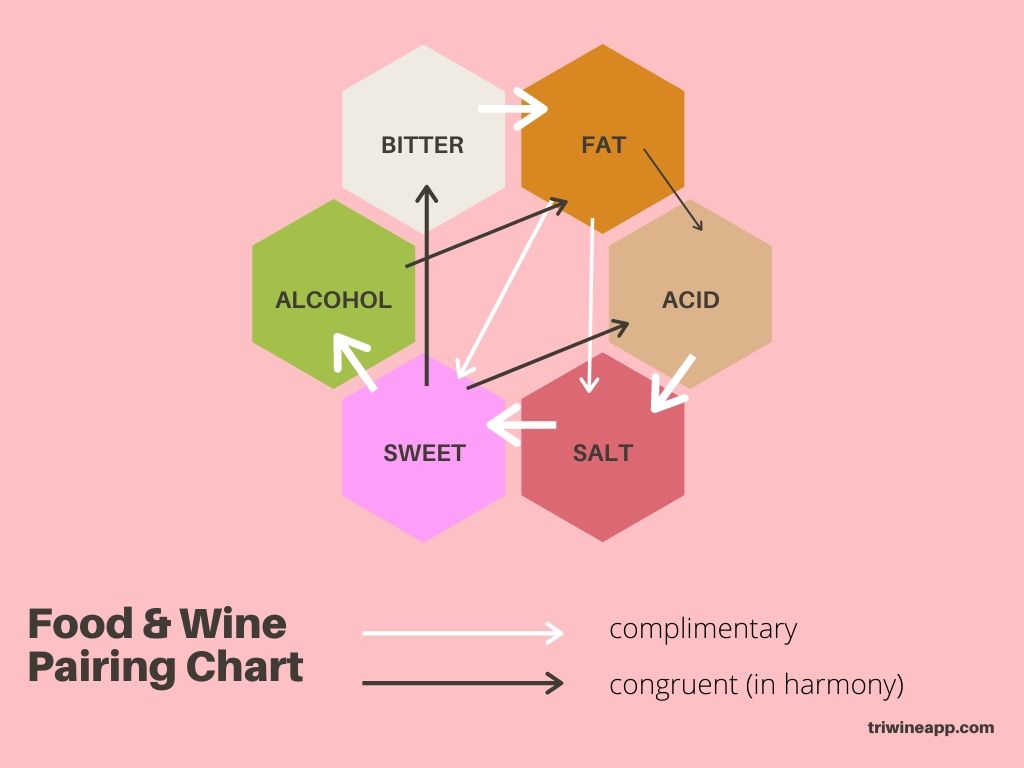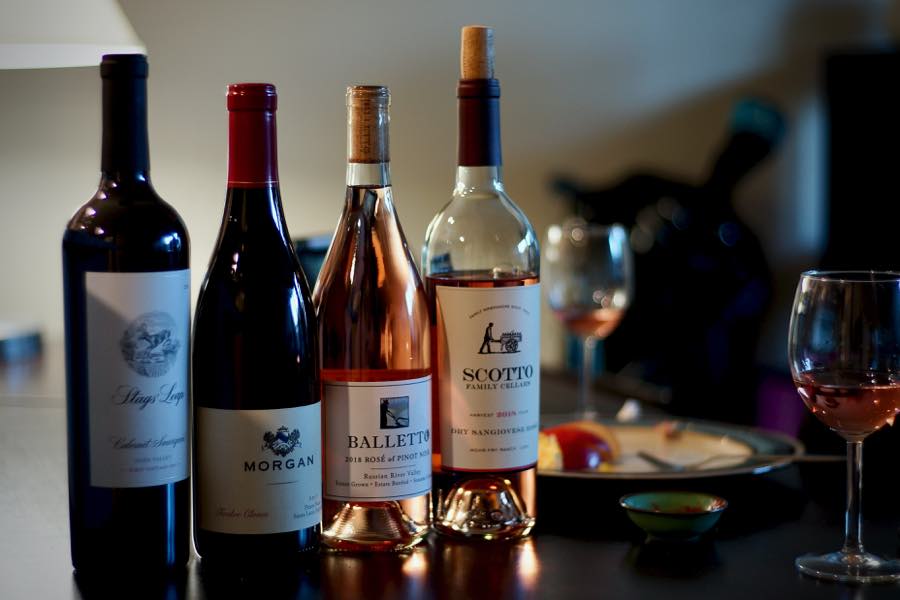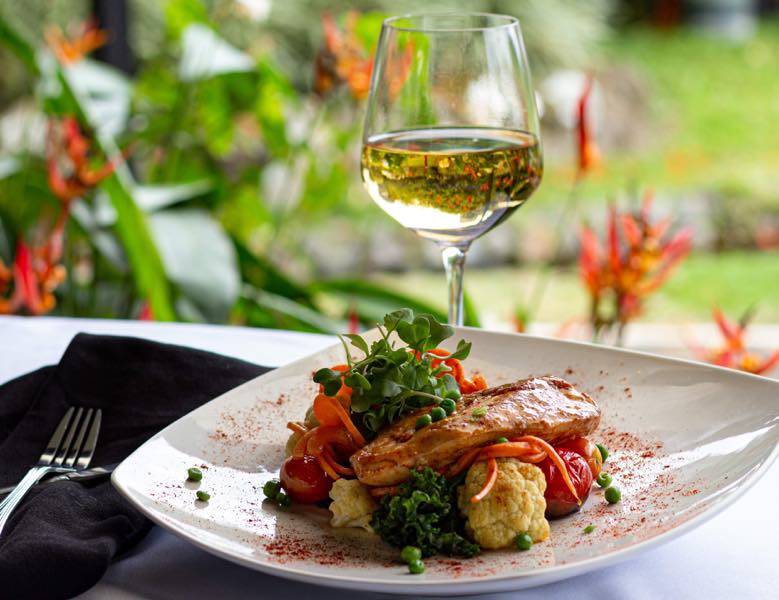Do you always need to drink red wine with meat and white wine with fish? Can you have a glass of Rosè with that pizza you just ordered? Are you wondering if a glass of champagne only goes best with sweet desserts? Congratulations! Wondering what food pairs best with the wine you’re drinking means that your interest in wine has entered the next level. You’ll be pleased to hear that a lot of wine and food pairing is common sense.
When it comes to food and wine pairings, we each bring our own tastebuds to the table. There are those of us that will drink any wine with any dish and those that try to balance the perfect wine with the flavors of their food. No matter which category you fall into, some dishes will always be challenging so it’s best to know how to properly pair wines with food. Wines that pair well will complement each other as well as bring out richness and textures.
Since COVID-19 has hunkered us to shelter-in-place and our favorite wineries have closed, we have been left to figure out what wine tastes good with food! With the closings of our favorite wine tasting rooms, vineyards, restaurants, and bars, wine delivery sales have risen by 66% and most of the surge comes from new customers. New wine consumers will turn into wine lovers and pretty soon they will also be curious to find out what wines pair well with food.
The only way to see what wines pair well is to hold your own at-home wine tasting experiment. Here at TriWine, we thought it would be helpful to put together a beginner’s guide, covering the basics of pairing wine with your dinner.
In this post, we’ll list the 6 primary characteristics or elements you need to know before starting a pairing and then we’ll show you how to set up an at-home wine pairing with some example pairings.
The one rule to remember is to trust your own palate and have fun!
6 PRIMARY ELEMENTS

The 6 Primary Elements of Wine and Food pairings are:
- FAT
- SALT
- ACID/SOUR
- SWEET
- BITTER
- TEXTURE/UMAMI
FAT
Both meat and dairy have high levels of fat and since wine doesn’t contain fat, the trick is to match a wine with fatty foods so that the fat balances with the acid or alcohol in the wine.
EXAMPLE PAIRING: Cabernet’s fruit and berry flavors complement the smoky, meaty flavors of a juicy steak
SALT
Salt is a tricky one because it shouldn’t compete with acidity in the wine which can hinder your wine choices. It can strip the fruit notes right out of red wines and make wines that have high alcohol levels taste bitter. The trick is to use salt sparingly to keep the sting out of the meal.
EXAMPLE PAIRING: Briny Oysters with Sauvignon Blanc works well because the acid in the wine cleans out the salt so you can taste the rich ocean flavors of the oysters
ACID/SOUR
Acid is in both wine and food which is why you should pair them together, making sure that the pairing has equal acidity. If the wine isn’t equal to the acidity in the food, the wine will taste bland and washed out.
EXAMPLE PAIRING: Champagne cuts fat because it has high acidity which helps to bring out flavors in a heavy dish. Cheesecake with a glass of bubbly like Sparkling Rosè or Brut is Trés Magnifique!
SWEET
Sweet wines may seem easy because you think you would just pair sweet wines with sweet desserts right? Think again! There are degrees of sweetness so be sure that the wine is sweeter than the dessert otherwise the dessert will strip the sweetness of the wine, which will make it taste tart and bitter.
EXAMPLE PAIRING: Try pairing a simple dessert like an apple or apricot tart with a sweet wine like a Sauternes which is a sweet Bordeaux. Beware of pairing sweet desserts with dry red wines! Trust us!
BITTER
Bitterness in wine stems from unripe grapes or sometimes from the seeds and pits that get stuck in the fermenting tank. When a bitter wine meets bitterness in food, they act as the opposite of sugar so instead of canceling each other out they just combine. If you taste more than a hint of bitterness, it’s bound to be unpleasant,
EXAMPLE PAIRING: Take a red wine like a Sangiovese and pair it with roasted tomatoes and herb-crusted potatoes. The cherry notes in the Sangiovese match perfectly with the roasted tomatoes which balances that bitter taste.
TEXTURE
Texture/Umami refers to heavy foods like meats or foods that have glutamates which are found in cold cuts, mushrooms, seaweed, and soy sauce. When matching textures, think of pairing light foods with light-bodied wine and heavy food with heavy-bodied wines.
EXAMPLE PAIRING: Slow Cooked Rack of Lamb with a bold red wine like Cabernet Sauvignon
Have fun with your pairings and if you’re feeling adventurous, try mixing things up by experimenting with contrasts: light wines with heavy foods and vice versa!
DIY AT-HOME PAIRING

Now that you know the 6 elements when pairing wine with food, let’s get you set up to do your own wine tasting experiment. The easiest thing about doing an at-home wine tasting is that you can try it with some of the foods or snacks you already have in your pantry or fridge. Just as you can choose any food, the wines you select are also completely up to you.
For this experiment, you will need a selection of 4 wines (Red, White, Sparkling, and Sweet) and 6 specific foods that represent bitter, sweet, salt, acidic or sour and texture.
Once you have your food selections, assemble each on a plate then pour your 4 glasses of wine and place them in front of you.
Next, grab a paper and pen so you can write down what food paired well and what didn’t work so well. Choose a rating system like 1 – 5 (1= Bad, 5 = Good) to determine how well each pairing went.
To help you figure out what food and wine paired well, check out the handy infographic chart we added above and follow the direction of the arrows. Examples you can try: Acidic Wine + Fat Food, Sweet Wine + Salty Food
Now that you’re set-up, it’s time to start your wine experiment!
- Take a bite of each food separately, chew it and then take a little sip of one wine before swallowing
- Rate your pairing
- Repeat this process until you have rated and paired all the foods with your wine selections
- Based on your top wine selections, try to combine the foods to see what other interesting flavors you notice
- Drink up and enjoy all the notes and flavors!
The key to a fun wine tasting is to remember that it’s an eye-opening experience and there are no wrong answers!
Looking for more ways to pair your favorite wine with food? Check out our throwback Valentine’s Day post for all the couples who are sheltered in place practicing #quarantineandchill! https://triwineapp.com/valentines-day-food-wine-pairings/
Love our content? Follow us on Instagram @triwineapp



Be the first to hear about the latest product releases, blog posts, and partnerships.
Receive Notifications on our limited Early Bird exclusive discounts!Join TriWine